 W
WThe culture of Quebec emerged over the last few hundred years, resulting predominantly from the shared history of the French-speaking North American majority in Quebec. Québécois culture, as a whole, constitutes all distinctive traits – spiritual, material, intellectual and affective – that characterize Québécois society. This term encompasses the arts, literature, institutions and traditions created by Québécois, as well as the collective beliefs, values and lifestyle of Québécois. It is a culture of the Western World.
 W
WLocated in east-central Canada, the province of Quebec, in 1972, adopted the Loi sur la Recherche Archéologique or the Archaeological Research Law. This law stated that all artefacts found in archaeological sites were to be protected as cultural goods.
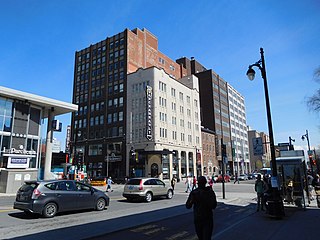 W
WArchambault, is the largest music retailer in the province of Quebec, Canada, as well as a major retailer of books, DVDs, periodicals, musical instruments, sheet music, games, toys and gift ideas. Its e-commerce site, www.archambault.ca, is the largest French-language retail site in North America. Archambault currently operates 14 stores in Quebec.
 W
WThe architecture of Quebec, was characterized in the beginning by the settlers of the rural areas along the St. Lawrence who largely came from Normandy. The houses they built echoed their roots. The surroundings forced enough differences that a unique style developed, and the house of the New France farmer remains a symbol of French-Canadian nationalism. These were rectangular structures of one storey, but with an extremely tall and steep roof, sometimes almost twice as tall as the house below. This roof design perhaps developed to prevent the accumulation of snow. The houses were usually built of wood, though the surviving ones are almost all built of stone. Landmarks in the rural areas were the churches and the mansion of the seigneurs. The seigneurs built much larger homes for themselves, but rarely were the manors ornate. Each parish had its church, often smaller copies of major churches in Quebec City or Montreal. A unique style of French-Canadian church thus developed.
 W
WL'Assemblée des six-comtés, also known as Manifestation des Canadiens contre le gouvernement anglais, à Saint-Charles, en 1837, is a large oil painting executed on canvas by Ontario artist Charles Alexander Smith in 1890.
 W
WLes Automatistes were a group of Québécois artistic dissidents from Montreal, Quebec, Canada. The movement was founded in the early 1940s by painter Paul-Émile Borduas. Les Automatistes were so called because they were influenced by Surrealism and its theory of automatism. Members included Marcel Barbeau, Roger Fauteux, Claude Gauvreau, Jean-Paul Riopelle, Pierre Gauvreau, Fernand Leduc, Jean-Paul Mousseau, Guy Borremans, Marcelle Ferron and Françoise Sullivan.
 W
WBag Balm is a salve developed in 1899 to soothe irritation on cows' udders after milking. Bag Balm is widely used to soothe dry, cracked skin on humans.
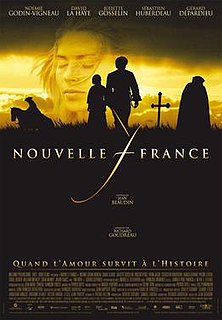 W
WBattle of the Brave is a 2004 historical romance directed by Jean Beaudin, written by Pierre Billon and starring Noémie Godin-Vigneau, David La Haye, Juliette Gosselin, Sébastien Huberdeau, Gérard Depardieu, Bianca Gervais, Irène Jacob, Pierre Lebeau, Vincent Pérez, Isabel Richer, Tim Roth, Jason Isaacs and Colm Meaney. Separate English and French language versions were shot simultaneously. The film cost CA$30 million, making it as of 2004, the most expensive ever made in Quebec.
 W
WBetteraves marinées are a recipe which dates back to when families in French-speaking parts of Canada would need to preserve food for the winter. The beets are cut up, boiled and put in jars. Then, they are coated in a recently sterilised mix of vinegar, mustard seeds, beet water and sugar, and the jar is quickly closed to ensure air cannot enter or leave the jar. The beets can be preserved this way for years. The betteraves marinées are best eaten cold.
 W
WA barouche is a large, open, four-wheeled carriage, both heavy and luxurious, drawn by two horses. It was fashionable throughout the 19th century. Its body provides seats for four passengers, two back-seat passengers vis-à-vis two behind the coachman's high box-seat. A leather roof can be raised to give back-seat passengers some protection from the weather.
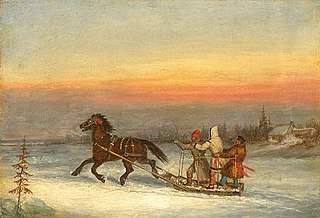 W
WA capote or capot is a long coat with a hood.
 W
WThe ceinture fléchée [sɛ̃tyʁ fleʃe] is a type of colourful sash, a traditional piece of French-Canadian clothing linked to at least the 17th century. The Métis also adopted and made ceintures fléchées and use them as part of their national regalia. French-Canadian and Métis communities share the sash as an important part of their distinct cultural heritages, nationalities, attires, histories and resistances. While the traditional view is that the ceinture fléchée is a French-Canadian invention, other origins have been suggested as well including the traditional fingerwoven Gaelic crios. According to Dorothy K. Burnham who prepared an exhibit on textiles at the National Gallery of Canada in 1981, and published an accompanying catalogue raisonné, this type of finger weaving was learned by residents of New France from Indigenous peoples. With European wool-materials, the syncretism and unification of French and Indigenous finger-weaving techniques resulted in the making of Arrowed Sashes. L'Assomption Sash is the oldest known sash design; produced by French habitants or artisans in Québec.
 W
WLa Chasse-galerie also known as "The Bewitched Canoe" or "The Flying Canoe" is a popular French-Canadian tale of Coureurs des bois who make a deal with the devil, a variant of the Wild Hunt. Its best-known version was written by Honoré Beaugrand (1848–1906). It was published in The Century Magazine in August 1892.
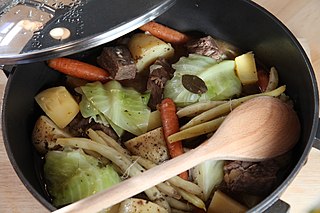 W
WQuébec's cuisine is a national cuisine in the Canadian province of Quebec descended from 16th-century French cuisine. Québec's cuisine began to develop in New France from the labour-intensive nature of colonial life, the seasonality of ingredients and the need to conserve resources. Québec's cuisine has been influenced by the province's history of fur trading and hunting, as well as Québec's winters, soil fertility, teachings from First Nations, British cuisine, American cuisine, historical trade relations and some immigrant cuisines.
 W
WDrawn & Quarterly is a publishing company based in Montreal, Quebec, Canada, specializing in comics. It publishes primarily comic books, graphic novels and comic strip collections. The books it publishes are noted for their artistic content, as well as the quality of printing and design. The name of the company is a pun on "drawing", "quarterly", and the practice of hanging, drawing and quartering. Initially it specialized in underground and alternative comics, but has since expanded into classic reprints and translations of foreign works. Drawn & Quarterly was the company's flagship quarterly anthology during the 1990s.
 W
WFèves au lard, also called bines or haricots au lard, is a traditional Québécois dish. It is usually beans mixed with pieces of bacon and either molasses or maple syrup that is then slow cooked in the oven. Sometimes other ingredients are added. Fèves au lard are usually served as a side during breakfast, but they can also be served as a side during lunch or supper and they can be served as a meal. Fèves au lard is a traditional dish presented at sugar shacks during le temps des sucres in Québec and other French-speaking regions of Canada.
 W
WThe Jesuit Estates Act was an Act of the Legislative Assembly of Quebec that compensated the Society of Jesus for land confiscated in Canada by the British Crown after the suppression of the Society in 1774. When the revived Society returned to Canada in 1842, they began to campaign for the repossession of their allegedly confiscated estates. The premier of Quebec, Honoré Mercier, proposed the Jesuit Estates Act, which offered the Roman Catholic Church a financial settlement in return for incorporating the estates into Quebec's Crown lands. This measure provoked much controversy among Orangemen and Protestants, but it was not overturned.
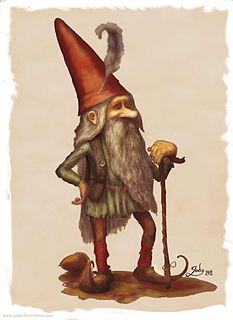 W
WA lutin is a type of hobgoblin in French folklore and fairy tales. Female lutins are called lutines.
 W
WMoving Day is a tradition, but not a legal requirement, in the province of Quebec, Canada, dating from the time when the province used to mandate fixed terms for leases of rental properties. It falls on July 1, which is also Canada Day.
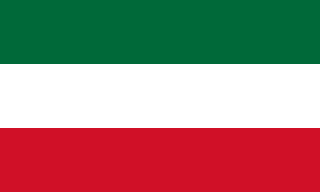 W
WNational Patriots' Day is a statutory holiday observed annually in the Canadian province of Quebec, on the Monday preceding 25 May. The holiday was established by the Lieutenant Governor of Quebec-in-Council in 2003, according to the Parti Quebecois premier Bernard Landry: "to underline the importance of the struggle of the patriots of 1837–1838 for the national recognition of our people, for its political liberty and to obtain a democratic system of government." Before 2003, the Monday preceding 25 May of each year was unofficially the Fête de Dollard, a commemoration initiated in the 1920s to coincide with Victoria Day, a federal holiday occurring annually on the same date.
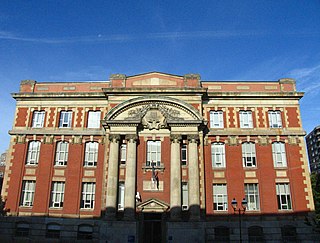 W
WThe Office québécois de la langue française is a public organization established on 24 March 1961, by the Liberal government of Jean Lesage. Attached to the Ministère de la Culture et des Communications du Québec, its initial mission, defined in its report of 1 April 1964, was "to align on international French, promote good Canadianisms and fight Anglicisms ... work on the normalization of the language in Quebec and support State intervention to carry out a global language policy that would consider notably the importance of socio-economic motivations in making French the priority language in Quebec".
 W
WPoutine is a dish of french fries and cheese curds topped with a brown gravy. It emerged in Quebec, Canada, in the late 1950s in the Centre-du-Québec region, though its origins are uncertain and there are several competing claims of having invented the dish. For many years it was perceived negatively and mocked, and even used by some to stigmatize Quebec society. Poutine later became celebrated as a symbol of Québécois culture and the province of Quebec. It has long been associated with Quebec cuisine, and its rise in prominence has led to popularity throughout the rest of Canada, in the northern United States, and internationally.
 W
WQuebec beer is the beer brewed in Quebec, Canada, often with ingredients from Quebec itself and generally following the recipes of the French, Belgian and British brewing traditions. Generally, the beers brewed in Quebec differ from those in the rest of North America because of the relative importance of the French and Belgian traditions alongside that of Great Britain. German-type beers are also produced by some breweries.
 W
WQuebec comics are French language comics produced primarily in the Canadian province of Quebec, and read both within and outside Canada, particularly in French-speaking Europe.
 W
WQuebec French profanities, known as sacres, are words and expressions related to Catholicism and its liturgy that are used as strong profanities in Quebec French and in Acadian French. Sacres are considered stronger in Canada than the foul expressions common to other varieties of French, which centre on sex and excrement.
 W
WQuebec wine is Canadian wine made in the province of Quebec. The grape varieties grown in Quebec, both white and red, all have common qualities needed by the harshness of the winter season, including resistance to winter temperatures, resistance to spring freezes and being early ripening. Some 40 varieties are grown in Quebec, with the most commonly planted being Maréchal Foch, Frontenac, De Chaunac, Vidal and Seyval blanc.
 W
WIrish Quebecers are residents of the Canadian province of Quebec who have Irish ancestry. In 2016, there were 446,215 Quebecers who identified themselves as having partial or exclusive Irish descent in Quebec, representing 5.46% of the population.
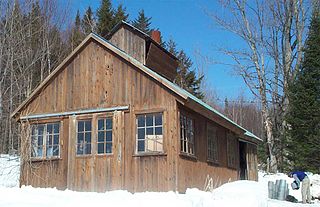 W
WA sugar shack, also known as sap house, sugar house, sugar shanty or sugar cabin is a semi-commercial establishment, primarily found in Eastern Canada and northern New England. Like the name implies, sugar shacks are small cabins or groups of cabins where sap collected from sugar maple trees is boiled into maple syrup. It is often found on the same territory as the sugar bush, which is intended for cultivation and production of maple syrup by way of craftsmanship.
 W
WYoung Trudeau: 1919-1944: Son of Quebec, Father of Canada is the intellectual biography of the former Prime Minister of Canada, Pierre Trudeau that deals with his parents, childhood, and education in the province of Quebec from his birth in 1919 until November 1944 when he left to study at Harvard University.